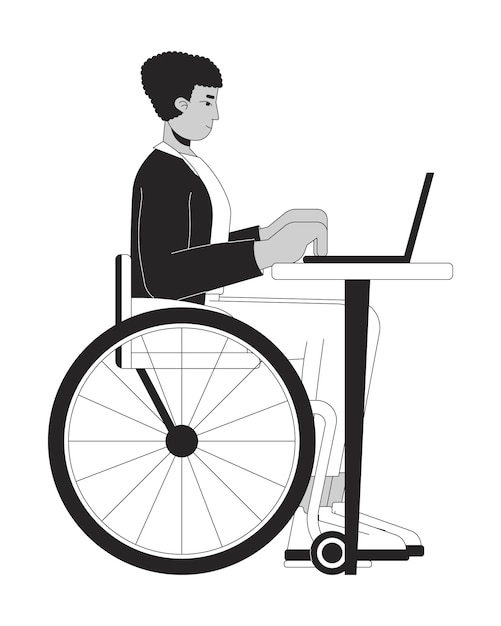Disability Insurance: A Complete Guide to Protecting Your Income

Disability insurance is a crucial employee benefit that protects your income if you become unable to work due to illness or injury, providing financial security during challenging times by replacing a portion of your lost wages.
Disability insurance is a critical safety net for anyone who relies on their income to cover living expenses. This comprehensive guide explores the various types of disability insurance, how they work, and why they’re essential for protecting your financial well-being if an unexpected illness or injury prevents you from working.
Understanding Disability Insurance
Disability insurance provides financial protection when you’re unable to work due to an illness or injury. It’s designed to replace a portion of your income, helping you maintain your standard of living during a period of disability.
This type of insurance is particularly important because health insurance typically covers medical bills, but it doesn’t replace lost income when you’re unable to work.
Types of Disability Insurance
There are two primary types of disability insurance: short-term and long-term disability insurance. Each offers different levels of coverage and benefit periods.
- Short-Term Disability (STD): This type of insurance provides benefits for a limited time, typically from a few weeks to a few months. It’s designed to cover temporary disabilities, such as recovery from surgery or a short-term illness.
- Long-Term Disability (LTD): Long-term disability insurance provides benefits for a more extended period, ranging from a few years to retirement age. It’s designed to cover more severe and prolonged disabilities that prevent you from working for an extended time.
Key Differences Between STD and LTD
While both STD and LTD offer income replacement, the key differences lie in the duration of benefits and the definition of disability.
- STD typically has a shorter waiting period before benefits begin, often just a week or two, while LTD may have a waiting period of several months.
- STD often has a less stringent definition of disability, focusing on whether you can perform your regular job duties. LTD may have a more restrictive definition, considering whether you can perform any job.
- The benefit period for STD is much shorter than LTD, with STD benefits usually lasting a few weeks to a few months, while LTD benefits can last for several years or even until retirement.
In conclusion, understanding the different types of disability insurance and their key differences is crucial for choosing the right coverage to protect your income in the event of a disability. Short-term disability is ideal for temporary conditions, while long-term disability provides more extended coverage for severe disabilities.
Benefits of Disability Insurance
Disability insurance offers numerous benefits that extend beyond simple income replacement. It provides financial security, peace of mind, and can help you maintain your lifestyle during a challenging time.
Having this protection in place can alleviate stress and worry about how you’ll cover your expenses if you’re unable to work.

Financial Security
The primary benefit of disability insurance is financial security. It replaces a portion of your income, helping you cover essential expenses such as:
- Mortgage or rent payments
- Utility bills
- Groceries
- Medical expenses
Peace of Mind
Knowing that you have disability insurance can provide peace of mind, reducing stress and anxiety about the potential financial impact of a disability.
- Protects your savings and retirement funds from being depleted
- Allows you to focus on recovery without financial worries
- Offers a safety net during an uncertain time
Maintaining Your Lifestyle
Disability insurance helps you maintain your lifestyle by providing a steady income stream, allowing you to:
- Continue participating in leisure activities
- Maintain your social connections
- Avoid significant lifestyle changes
In conclusion, the benefits of disability insurance extend far beyond income replacement, providing financial security, peace of mind, and the ability to maintain your lifestyle during a period of disability, which are all critical for overall well-being.
Types of Disability Insurance Policies
There are several types of disability insurance policies available, each with its own features and benefits. Understanding these policies is essential for choosing the right one to meet your individual needs.
The main types include individual policies, group policies, and Social Security Disability Insurance (SSDI).
Individual Disability Insurance
Individual disability insurance policies are purchased directly from an insurance company. This type of policy offers the most customization and control over your coverage.
Here are some key features of individual disability insurance:
- Portability: You can take the policy with you if you change jobs.
- Customization: You can choose the benefit amount, benefit period, and waiting period.
- Tax implications: If you pay the premiums with after-tax dollars, the benefits are typically tax-free.
Group Disability Insurance
Group disability insurance is typically offered by employers as part of their employee benefits package. This type of policy is often less expensive than individual policies, but it may offer less customization.
Key features of group disability insurance include:
- Lower cost: Employers often pay a portion of the premiums.
- Limited customization: You may have fewer options for benefit amounts and benefit periods.
- Tax implications: If the employer pays the premiums, the benefits are typically taxable.

Social Security Disability Insurance (SSDI)
Social Security Disability Insurance (SSDI) is a federal program that provides benefits to individuals who are unable to work due to a disability. However, qualifying for SSDI can be challenging, and the application process can be lengthy.
Key features of SSDI include:
- Strict eligibility requirements: You must have a severe disability that prevents you from performing any substantial gainful activity.
- Long application process: It can take several months or even years to get approved for SSDI.
- Limited benefits: The benefit amount may be insufficient to cover all your expenses.
In conclusion, choosing the right type of disability insurance policy depends on your individual needs and circumstances. Individual policies offer the most customization, group policies are often more affordable, and SSDI provides a safety net for those who meet the strict eligibility requirements. Weighing each option helps secure appropriate coverage.
Factors Affecting Disability Insurance Premiums
Several factors can affect the cost of disability insurance premiums. Understanding these factors can help you make informed decisions when choosing a policy and potentially lower your premiums.
The main factors include your age, health, occupation, benefit amount, benefit period, and waiting period.
Age
Your age is a significant factor in determining your disability insurance premiums. Younger individuals typically pay lower premiums because they are less likely to experience a disability.
- Premiums generally increase with age.
- Purchasing a policy at a younger age can lock in lower rates.
Health
Your health is another critical factor. Insurance companies will assess your medical history to determine the likelihood of a disability.
- Pre-existing conditions can increase premiums or be excluded from coverage.
- Maintaining good health and a healthy lifestyle can help lower premiums.
Occupation
Your occupation plays a significant role in determining your disability insurance premiums. High-risk occupations, such as construction workers or firefighters, typically pay higher premiums than low-risk occupations, such as office workers.
- The riskier your job, the higher the premiums.
- Some policies offer discounts for specific occupations.
Benefit Amount
The benefit amount is the monthly income you will receive if you become disabled. Higher benefit amounts result in higher premiums.
- Choose a benefit amount that adequately covers your essential expenses.
- Consider a smaller benefit amount to lower premiums.
Benefit Period
The benefit period is the length of time you will receive benefits if you become disabled. Longer benefit periods result in higher premiums.
- Choose a benefit period that aligns with your long-term financial needs.
- A shorter benefit period can lower premiums.
Waiting Period
The waiting period, also known as the elimination period, is the amount of time you must wait after becoming disabled before benefits begin. Longer waiting periods result in lower premiums.
- Choose a waiting period that aligns with your savings and emergency fund.
- A longer waiting period can significantly lower premiums.
In conclusion, understanding how these factors affect disability insurance premiums can help you make informed decisions and potentially lower your costs. Evaluating your age, health, occupation, and policy options allows you to find the best coverage at an affordable price.
How to Apply for Disability Insurance
Applying for disability insurance involves several steps, from gathering the necessary information to completing the application and undergoing a medical examination.
Being prepared and understanding the application process can help ensure a smooth and successful experience.
Gathering Information
Before you begin the application process, gather all the necessary information. This includes:
- Your personal information, such as your name, address, and date of birth
- Your employment information, such as your job title, job duties, and salary
- Your medical history, including any pre-existing conditions
- Your financial information, such as your income and expenses
Completing the Application
Once you have gathered all the necessary information, complete the disability insurance application. Be sure to answer all questions honestly and accurately.
- Review the application carefully before submitting it.
- Provide all required documentation, such as medical records and pay stubs.
Undergoing a Medical Examination
As part of the application process, you may be required to undergo a medical examination. This examination will help the insurance company assess your health and determine your eligibility for coverage.
- Be prepared to answer questions about your medical history.
- Provide any additional information requested by the insurance company.
Policy review
Prior to signing anything, take careful stock of what the policy entails. Understand payout schedules and what potential problems may arise during the policy.
- Discuss your personal questions with your insurance agent to better personalize any plan.
- Read recent reviews of the proposed insurance company.
In conclusion, applying for disability insurance requires careful preparation and attention to detail. Gathering the necessary information, completing the application accurately, and undergoing a medical examination are all essential steps in the process. Doing these allows for greater odds of a successful outcome.
Tips for Choosing the Right Disability Insurance Policy
Choosing the right disability insurance policy can be a complex process, but following these tips can help you make an informed decision and find a policy that meets your needs.
Consider factors such as your budget, coverage needs, and policy features.
Assess Your Needs
Start by assessing your individual needs. Consider your income, expenses, and potential financial obligations if you become disabled.
- Determine how much income you would need to maintain your standard of living.
- Consider any potential gaps in coverage from other sources, such as Social Security.
Compare Quotes
Get quotes from multiple insurance companies to compare coverage options and premiums. Don’t settle for the first quote you receive.
- Compare the benefit amounts, benefit periods, and waiting periods.
- Look for any discounts or special offers.
Read the Fine Print
Before purchasing a policy, read the fine print carefully. Understand the policy’s exclusions, limitations, and definitions of disability.
- Pay attention to any pre-existing condition exclusions.
- Understand the policy’s definition of disability and how it affects your eligibility for benefits.
In conclusion, choosing the right disability insurance policy requires careful research and consideration. Assessing your needs, comparing quotes, and reading the fine print can help you find a policy that provides adequate coverage and protects your financial well-being.
| Key Aspect | Brief Description |
|---|---|
| 💰 Income Protection | Replaces portion of income if you can’t work due to disability. |
| 🛡️ Policy Types | Includes short-term, long-term, individual, and group policies. |
| ⏰ Waiting Period | Time before benefits start; longer periods lower premiums. |
| 📝 Application | Requires detailed info, medical exam, and honest answers. |
Frequently Asked Questions (FAQ)
▼
Short-term disability insurance covers temporary disabilities, typically lasting a few weeks to months. Long-term disability insurance provides coverage for more extended periods, potentially lasting several years.
▼
A policy should cover around 60-80% of your pre-disability income. Assess essential expenses and consider existing financial obligations when determining adequate coverage.
▼
Yes, you can have both. However, benefits from a group policy paid by your employer are typically taxable, while individual policy benefits may be tax-free if you paid the premiums.
▼
Common exclusions include disabilities resulting from self-inflicted injuries, acts of war, and pre-existing conditions not disclosed during the application process. Review your policy’s exclusion list.
▼
SSDI is a federal program with strict eligibility criteria and a lengthy application process. It requires a severe impairment preventing any substantial gainful activity, potentially offering limited benefits after approval.
Conclusion
In conclusion, disability insurance is an essential financial safeguard that protects your income when you’re unable to work due to illness or injury. Understanding the different types of policies, factors affecting premiums, and application process can help you make informed decisions and secure the right coverage for your individual needs.





